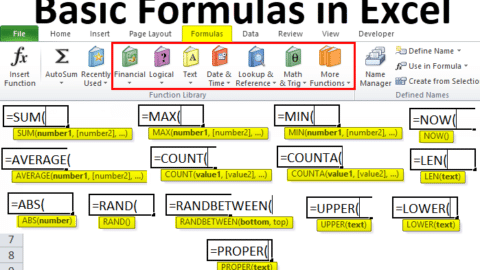In Microsoft Excel, conditional formatting is a powerful tool that allows you to format cells based on certain criteria. One of the most common use cases for conditional formatting is to format cells based on the value of another cell. This allows you to quickly highlight important data and identify trends and patterns in your data.
Table of Contents
In this article, we will show you how to use conditional formatting based on another cell value in Microsoft Excel. We will cover the basics of conditional formatting, including how to create simple rules based on cell values and how to use more advanced rules based on formulas. We will also provide some examples of common use cases for conditional formatting and give you some tips and tricks for using this powerful tool.
Basic Conditional Formatting Based on Another Cell Value
The simplest way to use conditional formatting based on another cell value is to create a basic rule that formats cells based on their value. To do this, follow these steps:
- Select the cells that you want to format.
- Click on the “Conditional Formatting” button in the “Home” tab of the Excel ribbon.
- Choose “Highlight Cell Rules” from the dropdown menu, and then choose “Less Than” or “Greater Than” depending on the criteria that you want to use.
- In the “Edit the Rule Description” window, enter the value that you want to use as the basis for the formatting rule. For example, if you want to format cells that contain values less than 10, enter “10” in the box.
- Choose the formatting options that you want to use. You can change the font color, background color, and other formatting options.
- Click “OK” to apply the rule to your selected cells.
Advanced Conditional Formatting Based on Another Cell Value
If you want to use more advanced conditional formatting rules based on formulas, you can use the “New Rule” option in the “Conditional Formatting” menu. This allows you to create rules based on complex formulas that can include references to other cells and functions.
To create a new rule based on a formula, follow these steps:
- Select the cells that you want to format.
- Click on the “Conditional Formatting” button in the “Home” tab of the Excel ribbon.
- Choose “New Rule” from the dropdown menu.
- Choose “Use a formula to determine which cells to format” and enter your formula in the box. For example, if you want to format cells that contain a value greater than the value in cell A1, you can use the formula “=B1>A1”.
- Choose the formatting options that you want to use. You can change the font color, background color, and other formatting options.
- Click “OK” to apply the rule to your selected cells.
Common Use Cases for Conditional Formatting Based on Another Cell Value
Conditional formatting based on another cell value is a powerful tool that can be used in a wide variety of use cases. Here are some examples:
- Sales Data: You can use conditional formatting to highlight cells containing sales data above or below a certain threshold. For example, you can format cells that contain sales data that is less than 10% of the total sales.
- Project Management: You can use conditional formatting to highlight cells that contain project data that is behind schedule or over budget. For example, you can format cells containing project data over 10% over budget.
- Budgeting: You can use conditional formatting to highlight cells containing budget data over or under a certain amount. For example, you can format cells that contain budget data that is more than $100,000.
Tips and Tricks for Using Conditional Formatting Based on Another Cell Value
Here are some additional tips and tricks for using conditional formatting based on another cell value in Microsoft Excel:
- Use absolute references: When creating formulas for conditional formatting, use absolute references for any cell references that you want to remain constant. This will ensure that your formulas work correctly when they are applied to other cells.
- Experiment with different formatting options: Conditional formatting allows you to customize the formatting of your cells in many different ways. Experiment with different font colors, background colors, and other formatting options to find the best way to highlight your data.
- Use data bars and icon sets: In addition to basic formatting options, Excel also includes data bars and icon sets that allow you to represent your data using bars or icons visually. These options can be especially useful when working with large amounts of data.
- Test your rules on sample data: Before applying your conditional formatting rules to your entire dataset, test them on a smaller sample of data to make sure that they work as expected.
- Combine multiple rules: You can combine multiple conditional formatting rules to create more complex formatting options. For example, you can use one rule to format cells that contain values less than 10 and another one to format cells with values greater than 50.
Following these tips and tricks, you can use conditional formatting based on another cell value in Microsoft Excel.
Conclusion
Conditional formatting based on another cell value is a powerful tool that can help you highlight important data and identify trends and patterns in your data. By creating rules based on cell values or formulas, you can quickly format cells based on the criteria that you specify. Whether you are working with sales data, project management data, or budget data, conditional formatting can help you make sense of your data and make more informed decisions. With the tips and tricks in this article, you can start using conditional formatting like a pro and take your Excel skills to the next level.
Hello, I’m Cansu, a professional dedicated to creating Excel tutorials, specifically catering to the needs of B2B professionals. With a passion for data analysis and a deep understanding of Microsoft Excel, I have built a reputation for providing comprehensive and user-friendly tutorials that empower businesses to harness the full potential of this powerful software.
I have always been fascinated by the intricate world of numbers and the ability of Excel to transform raw data into meaningful insights. Throughout my career, I have honed my data manipulation, visualization, and automation skills, enabling me to streamline complex processes and drive efficiency in various industries.
As a B2B specialist, I recognize the unique challenges that professionals face when managing and analyzing large volumes of data. With this understanding, I create tutorials tailored to businesses’ specific needs, offering practical solutions to enhance productivity, improve decision-making, and optimize workflows.
My tutorials cover various topics, including advanced formulas and functions, data modeling, pivot tables, macros, and data visualization techniques. I strive to explain complex concepts in a clear and accessible manner, ensuring that even those with limited Excel experience can grasp the concepts and apply them effectively in their work.
In addition to my tutorial work, I actively engage with the Excel community through workshops, webinars, and online forums. I believe in the power of knowledge sharing and collaborative learning, and I am committed to helping professionals unlock their full potential by mastering Excel.
With a strong track record of success and a growing community of satisfied learners, I continue to expand my repertoire of Excel tutorials, keeping up with the latest advancements and features in the software. I aim to empower businesses with the skills and tools they need to thrive in today’s data-driven world.
Suppose you are a B2B professional looking to enhance your Excel skills or a business seeking to improve data management practices. In that case, I invite you to join me on this journey of exploration and mastery. Let’s unlock the true potential of Excel together!
https://www.linkedin.com/in/cansuaydinim/










